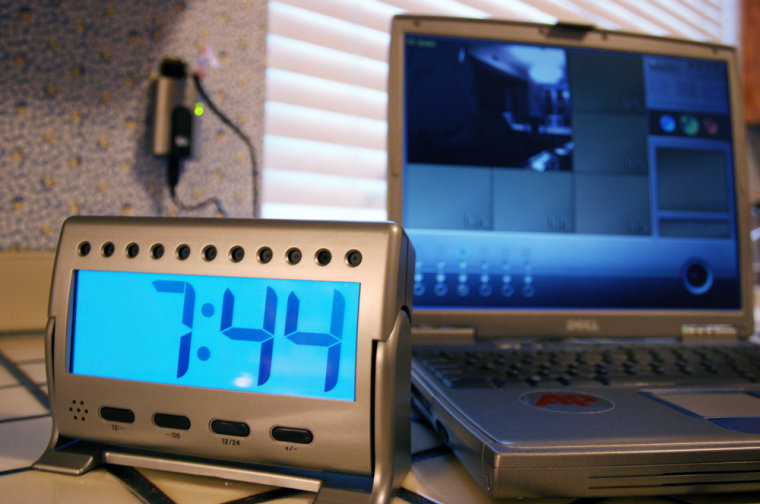If you've ever wondered whether the neighbors are taking a dip in your pool while you're at work or how the baby sitter is really treating your kids, the LukWerks Spy Camera might be for you.
The camera is disguised as a digital desk clock and controlled by software installed on your home Windows-based PC. Because it communicates with the computer over the electrical wires in your house, it doesn't need to be near the PC. And it can be monitored from anywhere.
But, if you're like me, you might not have much worth spying on. The house plants grow, slowly. The dog sleeps. And there aren't any fairies hiding your socks in the closet.
The system couldn't be easier to use. A receiver about the size of a pack of cigarettes plugs into an electrical outlet near your computer and links to the PC through a USB cable. That gets your PC talking to the network. From there, the LukWerks software allows you to monitor the image coming from the clock, and as many as five other cameras if you choose.
I tested the $330 clock and another, more obvious-looking camera the company — Wilife Inc. — loaned me. (Add-on Lukwerks cameras go for $230 each, so building the system out and around the house can get pricey quick.)
The clock itself felt a little light, and the plastic construction could have been stronger. The display numbers are huge compared to my standard-sized alarm clock, a detail that might draw the suspicion of a tech-savvy burglar who knows what to look for.
The surveillance system is built around the HomePlug networking standard that allows data to be sent over your home electrical wiring. HomePlug often takes a back seat to the Wi-Fi and Bluetooth wireless, but it works well for tasks like these that require AC power.
Live video footage popped up on my computer screen after I clicked the "find my cameras" button within the Wilife software setup screen.
The images from both cameras were sharp. The 640-pixel-by-480-pixel maximum resolution at 15 frames per second was fine for video spy footage around the home. The colors, however, came nowhere close to reality. My white ceiling looked pink and my black T-shirt appeared pale blue.
Also, there is no pan and zoom feature to the camera. I had to make sure the device was pointed in the general direction I wanted to cover most. A remote panning feature would have been nice for the price.
Curious colors aside, I was able to quickly set up a Web page hosted by Wilife and view my home live over the Internet. That was a username- and password-protected activity, and consumers should be careful if they plan to post images of their humble abode online.
Wilife's software also allowed me to schedule recordings for later viewing, a nifty feature that saved me the time of wading through hours of video footage for the 20 minutes of dog napping I'd been eager to analyze.
